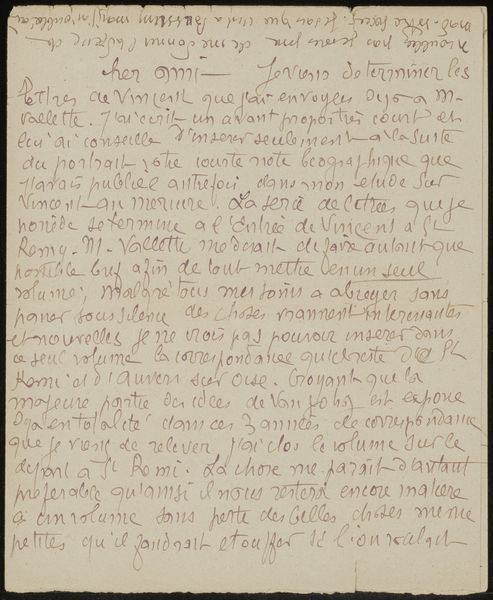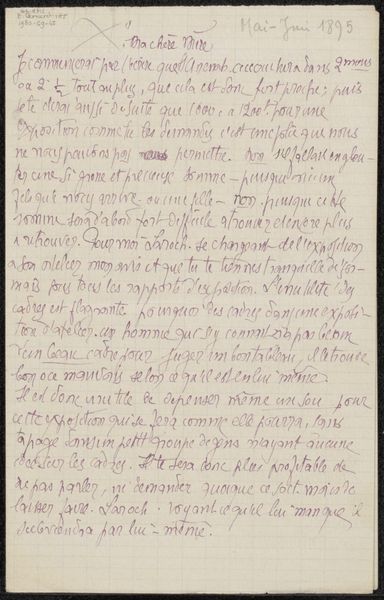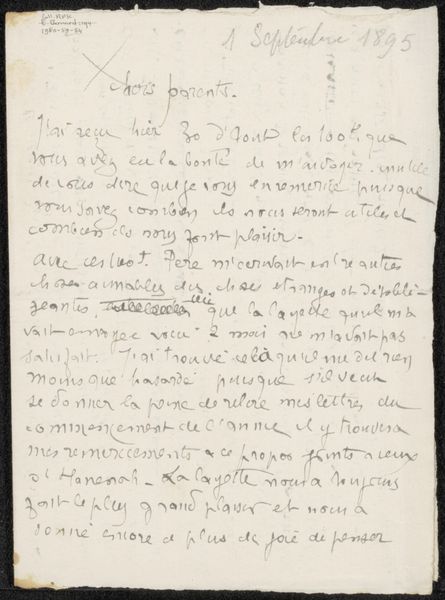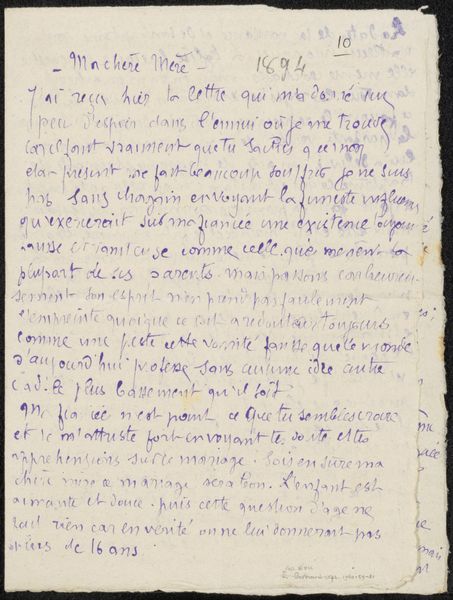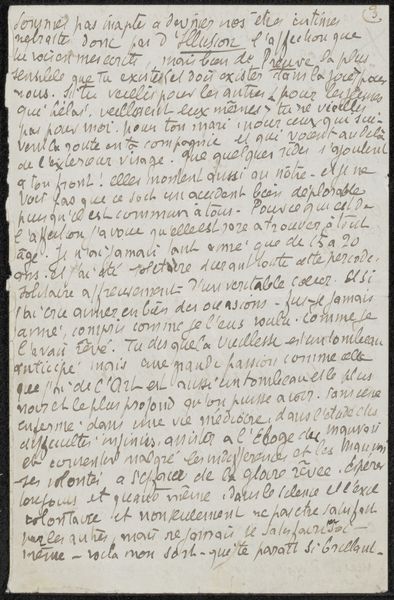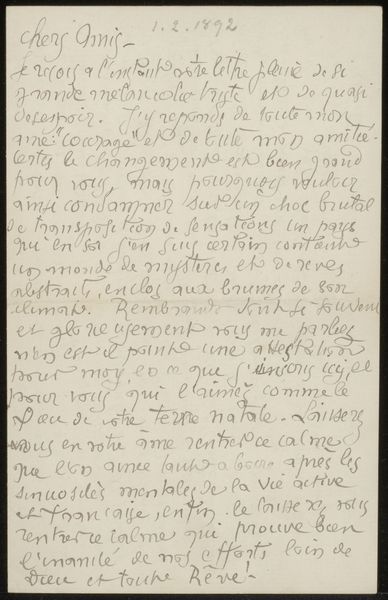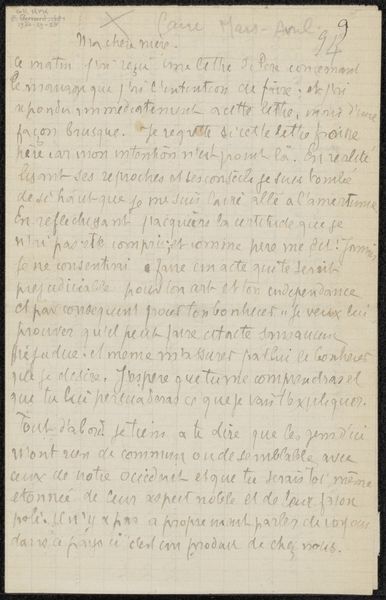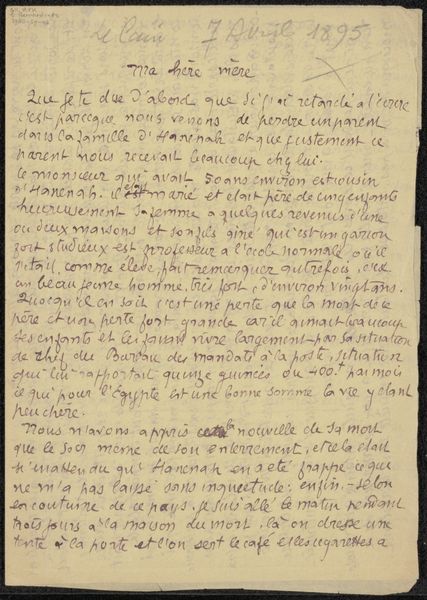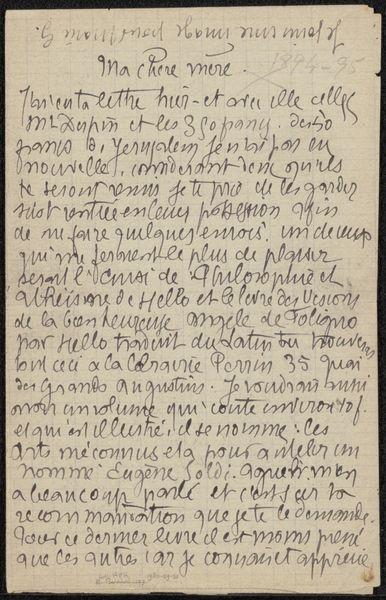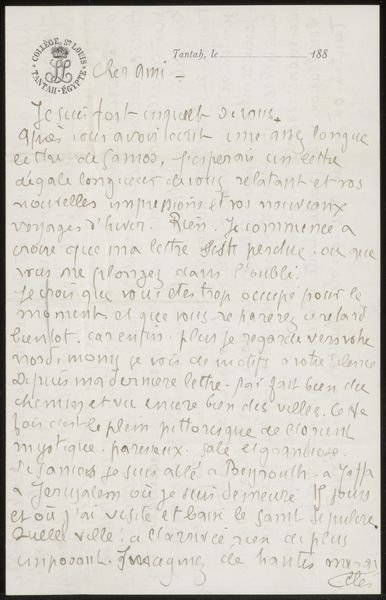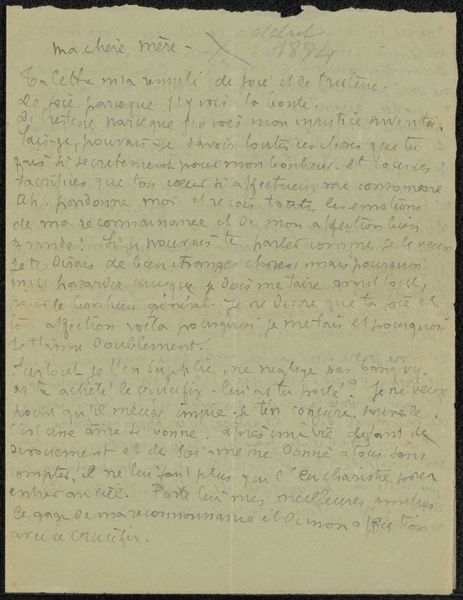
drawing, paper, ink
#
drawing
#
aged paper
#
hand written
#
hand-lettering
#
hand drawn type
#
hand lettering
#
paper
#
personal sketchbook
#
ink
#
hand-written
#
hand-drawn typeface
#
handwritten font
#
sketchbook art
Copyright: Rijks Museum: Open Domain
Curator: What a find! Before us is a letter penned by Émile Bernard before 1895, aptly named "Brief aan Emile Ernest Bernard en Héloïse Bernard-Bodin." The strokes of ink dance across aged paper, revealing not just words, but a tangible piece of history. Editor: Immediately, the visual weight of the handwritten text strikes me. It feels incredibly intimate, like peering into someone’s personal thoughts, especially because it appears to have been rapidly composed and captured directly in ink. The quality of the paper looks almost threadbare in places. Curator: Precisely! Bernard's life and artistic production are ripe for analysis through a critical lens. This letter, most likely penned to family members, provides insight into the intricate web of personal relationships that profoundly shaped his life and artistry. We glean access to domestic matters otherwise unrecorded and unavailable through canonized artistic output. Editor: I agree. When you focus on the materiality, the use of relatively inexpensive paper suggests it’s for everyday correspondence, not some grand artistic declaration. The quick, functional script reveals a process prioritizing clear, rapid communication. He wasn't overly concerned with formal calligraphy; instead, the raw materiality speaks to immediacy and function. The evidence of being handwritten with minimal surface is central here, wouldn't you agree? Curator: Absolutely. And think of the cultural politics at play. Epistolary exchange allowed for emotional intimacies that public life prohibited; through letters we see gendered expectations of kinship and care activated in the most everyday language. What secrets, anxieties, and affections are encoded within these lines? The ink, the hurried strokes, the texture of the paper—each element offers a piece of Bernard’s lived experience, filtered through the complexities of his time. Editor: So well put. Considering production—paper making, ink composition—and the embodied labour of writing offers profound insights. What can we ascertain about his environment, access to resources, or social position? That combination creates a palpable texture, adding nuance beyond a mere visual examination of the letter. Curator: It’s a beautiful artifact. Studying how artworks like this can illuminate intersectional narratives, shifting how we understand and engage with our artistic inheritance is key. Editor: Indeed. Appreciating not only what the artwork depicts but also what it represents culturally opens fresh critical insights into the period and this significant artist.
Comments
No comments
Be the first to comment and join the conversation on the ultimate creative platform.
